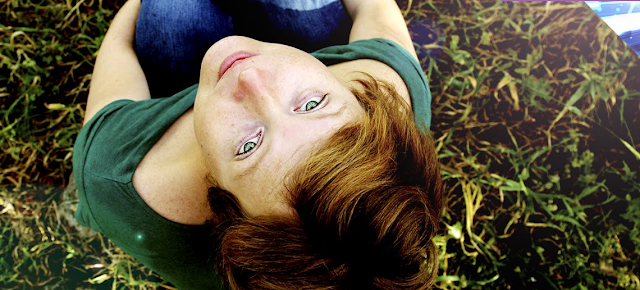Can Suffering Inspire You?
Art out Of Pain
"the artist takes in the world, but instead of being oppressed by it, he reworks it in his own personality and recreates it in the work of art" Ernest Becker
There was a great scene in a movie and these two brothers that wished to become writers, We start learning about the story of their unfolding lives, the drama of their every day. One of the guys falls in love, and then his girlfriend commits suicide; something utterly tragic, erupts in his life, and the then the film continues, and, all in sudden, there's a scent that shows him frantically writing down. and the narrator tells us he felt guilty over the creativity triggered by his lover's death.
This notion that tragedy can lead to breakthrough, can lead to rebirth, that the instances of suffering in our lives can actually inspire us to make beautiful art is a sort of paradoxical ecstasy. We can take our wounds and we can turn them into something larger, that we need not have suffered in vain game, is a wild idea, because it doesn't mean that we are happy for our suffering.
It doesn't mean that we wished for these tragic things to happen to us as artists, but it means that we're able to take that pain, take that aching rhapsody and output something in the world and make a contribution, because at least that way, we validate the fact that we exist. we affirm ourselves.
We have no choice but to do so, in the face of entropy, in the face of death, to not say that we exist is to not live at all.
Jason Silva - Sots of awe
The looking glass self
In the age of social media, people increasingly get to
have the sense of authorship over how they present themselves to the world, you’r
carefully curated instagram feed, your facebook profile pictures, these are
ways in which you essentially get to dictate, you get to construct the way that
other people perceive you, and this raises all kinds of questions about the
fluidity of our identity about how we interface with other minds and other people
and it raises all kinds of questions about authenticity, authentic exchanges.
Who m I? and so the philosopher by the last name of Cooley, he wrote about the
looking glass self theory and basically what he said is that we come to be
through the interactions that we have with other people, by making models of
the other person’s mind. In other words, he says:”I’m not who I think I’m, I’m
not who you think I’m, I’m who I think you think I’m”. In other words, we make renderings
of what other people think of us and actually play the role of becoming we
think they think we are, but in the end we never actually get to know other people’s
minds, all we get to know is the modeling of their modeling of us.
So in the end of the day, we live inside a construct of our own making. I guess perhaps what we should do is come clean about this fact and stop asking questions about authenticity in the ways that we present ourselves artfully on social media and instead accept the fact that identity is a fluid act of improvisation and that the self is not a solid thing and never has been. Now again,
I’m not who I think I’m, I’m not who you think I’m, I’m who I think you think I’m. Wrap you head around that one
Usefulness of forgetting
One of the
things that happens when we grow older, with our nodding resignation into
nothingness, is that we enter a kind of consciousness known as "The been there's and done that's" of the
adult mind. It's that notion when nothing excites or overwhelms anymore because
you've seen it all before. what a tragedy this is, right ?
I mean, come on! We all remember nostalgically the intensity of experiencing something for
the first time. Seeing the
world through the eyes of child - wonder struck, entranced by awe, succumbing
to astonishment, giving in to astonishment, month gaped wide, I mean, damn to
see something for the first time. but then what happens ? then you assimilate,
you model it in your brain, you store it in your library of been there's and
done that's and you no longer engage, sensorily with stimuli. It's called
hedonic adaption, familiarity breeds boredom. It's so depressing, right ?
And so what
we do ? I think this is where mindful self-inquiry come in, this is where
meditation, this is where breathing exercises come in. This is where boarding a
craft that flies you across the world can be therapeutic like to injecting you
with a little bit of life by stimulating you and jet-lagging you, and placing
you with an entirely different wallpaper of the mind. That's why travel
revitalizes, sometimes tweaking our perception.
Perhaps that's why a museum
take an ordinary item and puts it on the wall, decontextualizes it, and brings
our attention back to it. We get to enter the archetypical space where the
specific stands in for all of its kind, stands in for the reversal.
We all like to
enter a modality of consciousness known as PLOTO'S REALM OF IDEAS. That's where
you live in the present, that’s when anxiety about the future and melancholy
for the past get drowned out by the ever present rapture of the NOW. Knowing
only now and the bliss of now.
Jason Silva - Sots of awe
Settling the Account (Promises to Keep #3)
Settling the Account
Settling the account, happens to be the third book is Promises to keep series for Shayen parkinson, this book was a quite long book, and unexpectedly it was Lezzi and her family's book than Amy's, but I really enjoyed every single chapter from that book, surprised a bit and so touched by Charlie's mood the night he died, I always knew that he had that part inside him but he didn't want to show it, I was expecting more drama and more excitement in Amy and Ann's meeting, or maybe Sarah's confess abt the matter.
but in general, hats off for u Shayn Parkinson u took me in such a great journey with the three of ur books and I hope to read more her works
but in general, hats off for u Shayn Parkinson u took me in such a great journey with the three of ur books and I hope to read more her works
تنفيس نفس
أحلام اليقظة هي نوع من الاسترسال الفكريّ، وهي كثيرة في سن البلوغ، وفي بعض الأحيان تزيد وتسيطر على الإنسان؛ خاصة إذا كان لديه سمات القلق.. أو محاولة للتكيف مع واقع مؤلم، أو هروب من الواقع نفسه؛ لأنها تصرف انتباهه عن صعوبات الحياة والقلق والتوتر، وفي بعض الأحيان يستفيد منها أصحاب الطموح الشديد، حيث يملأون الفراغات المعرفية الذهنية والفكرية.
- إذًا أحلام اليقظة ليست مرضا ولا نوعًا من الجنون؟.
- ليست جنونًا، بل هي تنفيس للنفس، النفس تتعب كأي عضو في أي جهاز آخر بالجسم، كآلام البطن، والصداع في الرأس، ولا بد أن ندرك هذا جيدًا، ...إنها آلام يصعب الاهتمام بها.
كل أسرار قلوبنا غير قابلة للاندثار بل هي قابعة بهدوء تحت سطح وعينا وتتراكم في العقل الباطن وتظهر أحيانًا فجأة في لحظة غضب أو زلّة لسان أو أحلام يقظة أو حلم مزعج ذات ليلة... أحيانًا هناك حالات معينة، تشخّص كمرض نفسي وتحتاج لعلاج، وبعض المهدئات، هناك ظاهرة معروفة في الطب النفسي غير منتشرة ولكننا نأخذها في الاعتبار وهي ما يعرف باستبدال الأعراض، بمعنى أنه ممكن أن يظهر قلق ويختفي وتظهر وساوس، ثم تختفي الوساوس وتظهر أحلام اليقظة وهكذا، الظاهرة معروفة، وليست خطيرة، لكن هي دليل على وجود نوع من القلق، وهذا القلق من الممكن أن يتحول إلى قلق إيجابي
هيبتا
هيبتا رواية عربية للكاتب محمد صادق, جرت احداثها عمليا في قاعة المحاضرات اين القى "أسامة" محاضرة مدتها 6 ساعات بهدف التعريف بمراحل الحب السبع , تمحورت حول قصص شخصيات لقبوا ب (أ) أو (ب) أو (ج) أو (د) ليصبحوا في الآخرشخصا واحدا, مرت على هذا الاخير احداث من الصعب التصديق انها فعلا حدثت لشخص واحد, لكن في رأي وفق الكاتب في جذب انتباهي إلى كل الاحداث عبر كل المراحل باسلوب جديد و بسيط رغم الابتذال الذي احسست به نتيجة اللغة العامية و ما يصحبها من عبارات و ألفاظ حبذا لو ألغيت
أين أنا من الهبتا ؟ سؤال اطرحه على نفسي عند كل نهاية كتاب,وفعلا لم أجد نفسي في هذا الكتاب لأنني و بصراحة في مرحلة ما قبل الهيبتا ههههه و لكن اعلم انني سارجع الى هذا الكتاب يوما ما انشاء الله
Subscribe to:
Comments (Atom)





























